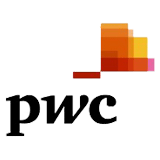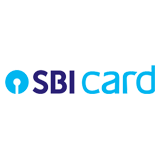Business Process and Policy Management
The candidate must have the following skill set:
Ensure Business Rules, work instructions, process flow and policies are maintained
as per BPM (Business Process Management) standard and are aligned with
Organizations strategic goals.
Possess clear understanding on End-to-End NBFC Organizations value chain and
supporting functions.
Lead Implementation of effective Policy or Process governance .
Be a single point of contact and gatekeeper for all process/policies related exceptions,
queries and change implementation, business risks mitigation, adopting best practices
& develop recommendations.
Local policy administrator Ensure regulatory policies rollout and updates are
enacted.
Driving Business Controls activities.
Key responsibilities of the Business Process and Policy Management function
Business Process and Policy Management (BPPM) involves overseeing and optimizing
business processes and ensuring compliance with policies and regulations. The
candidate will focus on improving operational efficiency, ensuring effective governance,
and aligning organizational strategies with defined policies. The role is integral to
aligning business operations with organizational goals, legal requirements, and industry
standards.
1. Business Process Design and Optimization
Process Mapping: Document and analyze existing business processes to
identify inefficiencies, bottlenecks, and areas for improvement.
Process Re-engineering: Redesign business processes to optimize
performance, reduce costs, and improve service delivery.
Continuous Improvement: Apply process improvement methodologies (e.g., Six
Sigma, Lean, Kaizen) to drive ongoing improvements in business operations.
Automation: Recommend or implement process automation solutions to
streamline workflows and reduce manual intervention.
2. Policy Development and Compliance
Policy Creation: Develop and implement policies that govern the organization s
operations, ensuring they align with legal requirements, industry standards, and
internal goals.
Policy Review and Updates: Regularly review existing policies and update them
to reflect changes in laws, regulations, and company objectives.
Compliance Monitoring: Ensure that business processes and activities are
compliant with internal policies, regulatory requirements, and external
standards.
Risk Management: Identify potential risks associated with business processes
and policies and implement mitigation strategies to minimize exposure.
3. Stakeholder Collaboration
Cross-Functional Collaboration: Work with various departments (IT, HR,
finance, operations, etc.) to ensure business processes align with overall
business strategy and that policies are properly implemented.
Training and Support: Provide training to employees on new or updated policies
and processes, ensuring that staff are informed and can comply with them.
Change Management: Manage changes to business processes and policies,
ensuring smooth transitions and minimal disruption to operations.
4. Performance Measurement and Reporting
KPI Development: Define key performance indicators (KPIs) and metrics to
assess the effectiveness of business processes and adherence to policies.
Monitoring and Reporting: Track performance against established goals and
report progress to leadership, identifying areas for improvement.
Data Analysis: Collect and analyze data related to process performance and
policy adherence to inform decision-making and continuous improvement
efforts.
5. Technology Integration
Process Management Tools: Implement and manage software tools (e.g.,
Business Process Management Software, workflow automation platforms) to
optimize processes and ensure adherence to policies.
Digital Transformation: Assist in the digital transformation of business
processes, integrating new technologies to enhance productivity and innovation.
Document Management Systems: Oversee the creation, storage, and
management of policies, ensuring proper documentation and version control.
6. Governance and Auditing
Governance Framework: Establish governance frameworks that define roles,
responsibilities, and accountability for managing processes and policies.
Internal Audits: Conduct regular audits to ensure that business processes and
policies are being followed correctly and effectively.
Regulatory Compliance: Keep track of regulatory changes that might impact
processes or policies, and adjust accordingly to maintain compliance.
7. Strategic Alignment
Business Strategy Alignment: Ensure that business processes and policies are
aligned with the overall business strategy, organizational goals, and customer
needs.
Process and Policy Innovation: Drive innovation in process management and
policy design to stay competitive in the marketplace.
Cost Management: Ensure that processes are designed and policies are
enforced in a cost-effective manner, balancing efficiency with compliance.
8. Documentation and Standardization
Standard Operating Procedures (SOPs): Develop and maintain SOPs that
define standard practices for business processes.
Documentation of Best Practices: Identify, document, and disseminate best
practices across the organization to standardize processes.
Knowledge Management: Maintain a repository of knowledge related to
processes, policies, and best practices for easy reference by stakeholders.
9. Customer and Supplier Relationships
Supplier Management: Ensure that suppliers business processes align with the
organization s policies, especially regarding quality, delivery, and compliance.
Customer Experience: Review business processes from a customer
perspective to ensure the company delivers excellent customer service while
adhering to policies

















